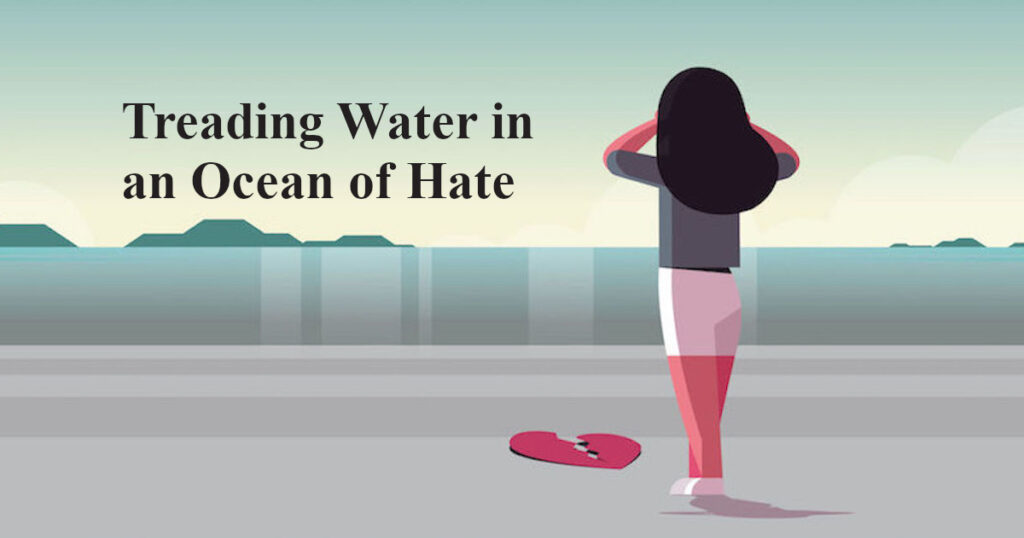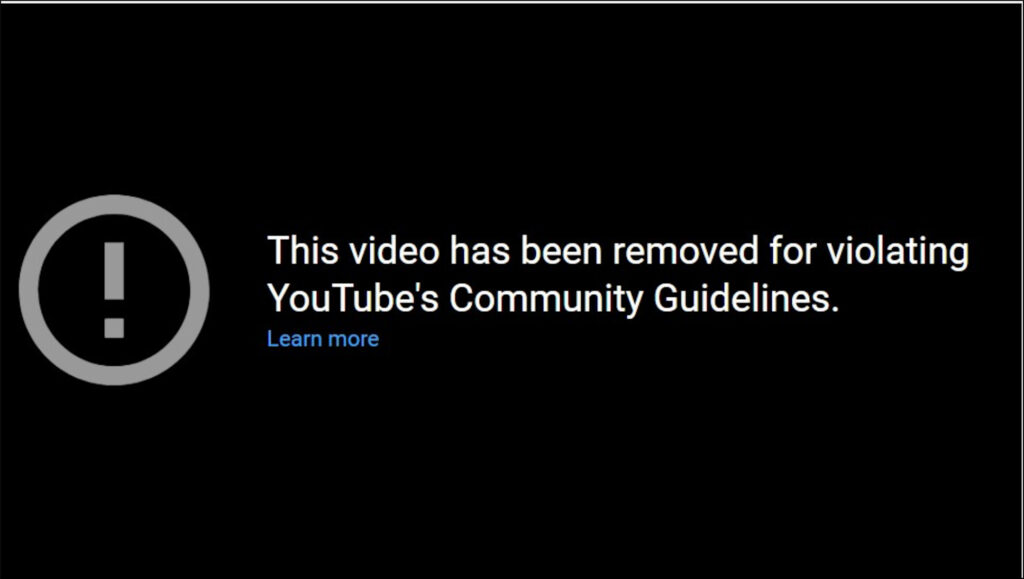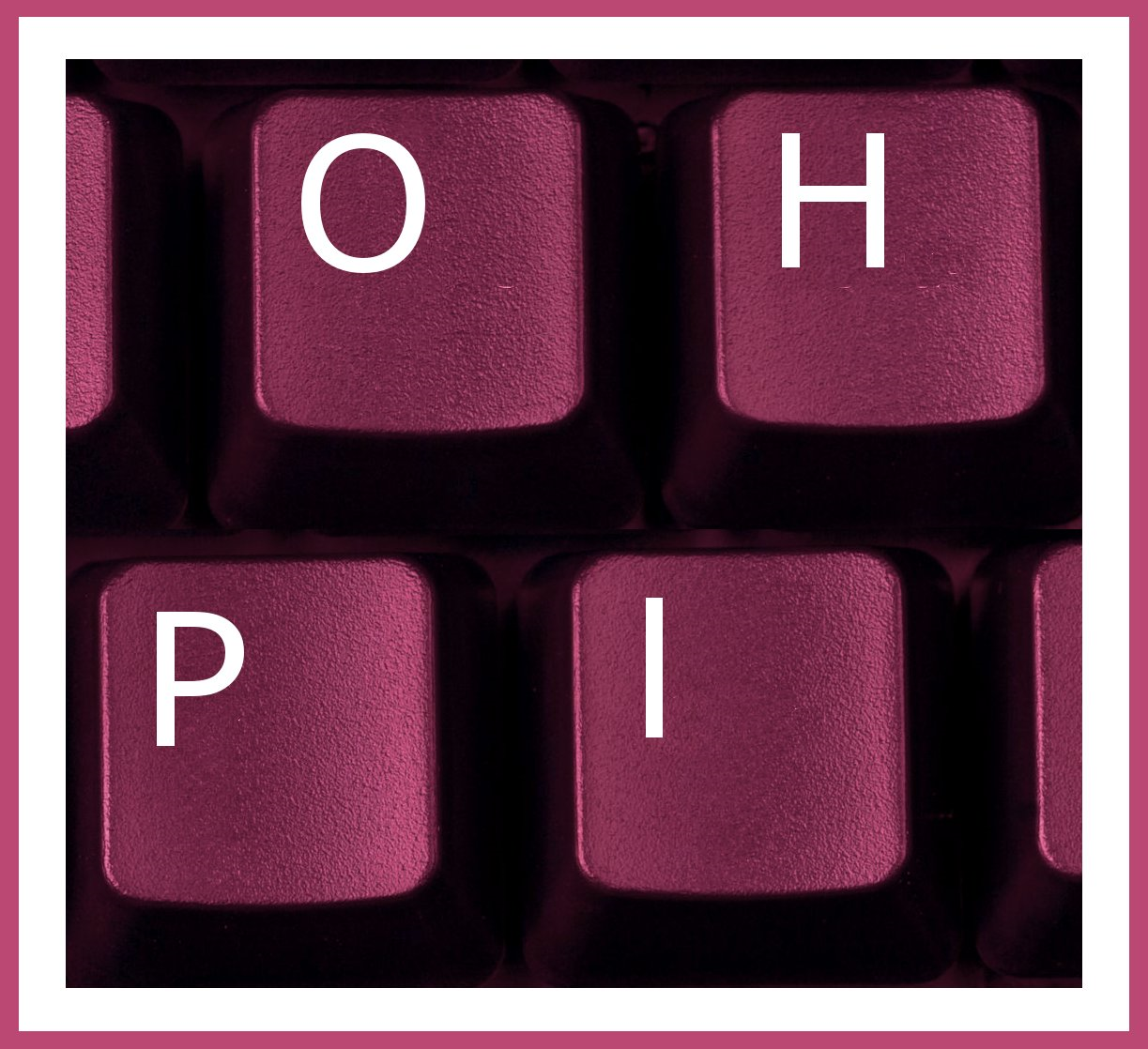
Social Media
In recent weeks I have noticed several friends and family members on Facebook posting racist material and conspiracy theory videos. Sometimes they add their own vitriolic message to the post, insulting the intelligence of people who dare disagree with them. Do they recognise themselves as propagators of online hate? Is online hate more prolific than usual during this pandemic? They seem unperturbed when their posts are replaced by this:

Waves of Online Hate
As a software engineer, I am interested in modelling and simulation and completed a PhD. A few years ago, I devised an idea to help us understand the complexity of gender inequity and other forms of structural violence. My idea was to build a sociological modelling framework by leveraging existing software libraries. The framework would help sociologists create models and run large scale, systems-of-systems simulations of complex human interactions.
I often visualise social media users as being immersed in a social ocean, creating waves as they pass messages on. I imagine modelling the spread of online hate as a wave. Low amplitude waves of online hate propagate for long distances and often pass through us unrecognised – unless we are a target. As a target, the messages are frightening. Words have the power to destroy lives. Words trigger people to commit acts of physical violence. As a target, our natural tendency might be to defend ourselves and immediately fire back an angry retort – but fighting makes us more visible. Our thrashing in the water attracts predators. What alternatives are there? Should we submit and absorb the wave’s energy? Should we ignore the wave and let it flow through us? Should we hide in the crowd, adding to the wave and propagating its message?
It can be difficult to trace a wave of hate back to its original source and to appreciate what influenced the person to start it. Perhaps we can also help prevent the rapid spread of online hate by adopting a different perspective.
In physics, we can model the propagation of a wave by viewing every point on a wavefront as a source, using Huygens’ Principle. Applying this analogy to the social media context, each of us becomes a potential source of online hate – even if all we do is propagate the message in its original form. An instigator is a highly active propagator – someone who either creates their own message or makes an incremental contribution to the wave’s amplitude by adding their own toxic words, before passing it on.
Using this viewpoint, we can switch from an “us and them” scenario, to an “us” scenario. It is all us. The problem of how to stop the spread of online hate becomes less overwhelming when we focus on our own behaviour and the behaviour of our closest connections.
Instigators of online hate target our vulnerabilities, and especially our need to feel a sense of belonging to a group. If we fail to recognise this, we may quickly adopt their patterns of behaviour, hoping to gain status and acceptance within their group. We adopt the same language and the same techniques and then we turn around and target others. The wave propagates. We expend very little energy and easily gain strength by riding the peak and becoming propagators of hate.
Instigators of hate often insult the intelligence of readers who do not agree – the “sheeple”. Some people in my social networks lash out at those of us who hold university degrees. It disturbs me to witness people I know being swept up in waves of hate and propagating messages that are splitting social groups along already existing cleavage planes.

Surviving a Rip Tide
What happens when we fire back a response? Our response is captured. Parts of it are replicated and fused into the message sequence to be used as a weapon against future targets. Our response becomes part of the muddy water surrounding the peak of the wave, travelling with it and making the peak less visible to future targets – making it more likely that people similar to us will be drawn into it and become propagators themselves. Sometimes by responding, we make the message of hate more contagious.
Instigators of online hate target us in many ways. They often target our core belief systems – whether they be religious, spiritual, cultural or political. Their messages might suggest that they are morally superior. Those who agree with them are rewarded with praise and glorification. These are welcome rewards for people who feel isolated and unheard.
The instigators of toxic messages often suggest that many others agree with them – a tactic to make us feel alone and to undermine our courage – to make us feel that we are swimming alone against an enormous tide. It might feel tempting to join them, to feel less alone, and less exhausted, but it is worth remembering that the tide is not that strong, unless we are in a rip, and in that case we should conserve our energy and swim perpendicularly to it – maybe not the direction we wish to go, but the direction that ensures our survival. We can start again where we left off once we have safely escaped the rip.
What is the solution? Can we create an effective absorbing layer to contain this multi-dimensional attack of our own creation? Can we engineer a solution? Engineers know that impedance matching is difficult, even for the most basic wave equations. How do we avoid reflections? Some energy will always seep through our boundaries. Should we start our own wave? There is a high risk that our own wave will collect mud as it travels and be unrecognisable the next time it passes through us.
My approach with people in my social media circles has been to accept that they are free to believe in conspiracy theories. I acknowledge that they take comfort in having simple explanations for overwhelmingly confusing world events. Personal attacks and messages of hate, however, are unacceptable to me.
Online Hate in the Workplace
In the past, I have been directly targeted within workplaces by instigators of online hate via internal corporate chat channels, such as Slack and Skype. These applications have a distinct social media flavour and I have observed online abusers within workplaces adopting the same behaviours and language as abusers on social media. They show flagrant disregard for the workplace laws that protect us from vilification, bullying and harassment. Even in this professional context, instigators seem to have no qualms about making bold and easily refuted false statements on topics they know almost nothing about. It appears they are attempting to trigger arguments and create division.
I was tagged in a message like the following – it was posted by a colleague on a company chat channel, visible to all employees of the company:
“Hey! I happen to think second-wave feminism doesn’t belong in this industry. I also know that a number of other staff agree with me.”
The context of the message is very important. He sent it immediately after people on the channel started celebrating an announcement I had just made – my winning of a popular vote for my idea to build a sociological modelling framework. There was no prize, or formal public recognition, but I was invited to attend an innovation day. I was so excited. It was the pinnacle of my career. The emotional impact of that toxic message at such a happy moment, was profound. I was totally unprepared for an attack of that nature in a professional environment – in front of all my colleagues.
Over the previous months, I had made many posts celebrating women in engineering on the company intranet. It had taken over 20 years to find my voice and build my courage, especially because I am usually the only woman on the team. Most of my male colleagues welcomed my insights – especially those with daughters. Strangely, my attacker never commented on those posts.
The other observation I made about the misogynist, is that he did not target my idea at all. He made no comment about the technical or scientific merit of my idea. Instead, he aimed at my driving passion – my ideological belief that women should share equal human rights with men. Attacking a person’s fundamental belief system is a tactic I have often seen used by online trolls when they attempt to derail the achievements of others as quickly as possible, to stifle participation and innovation by underrepresented or disempowered groups.
The man chose to launch his online attack on my ideological and political beliefs at the very moment I achieved a small degree of success and external recognition for a technical idea. The timing is no coincidence. Similar incidents have been a regular occurrence throughout my career but became more frequent once I gained status as a senior engineer in leadership. I have even been threatened with physical violence – once because I successfully improved the computational efficiency of a simulation algorithm using a well-known mathematical approach. It was an approach that the perpetrator had never heard of and did not understand. I was simply doing my job.
So why was my male colleague so aggressively opposed to second-wave feminism? The second wave was from the 1960s to the early 1980s – my mother’s generation of feminists. One of the biggest achievements of the second wave in Australia was the equal pay legislation of 1969. From his message, we can deduce that he wants the industry to revert to laws from over 50 years ago. Imagine if his message had read:
“Hey! I happen to think women in our industry should not be paid equally. I also know that a number of other staff agree with me.”
“Hey! I happen to think women in our industry should not share the same human rights as men. I also know that a number of other staff agree with me.”
Statements like that would have gone down like a lead balloon for most people. Trolls are usually very careful with their selection of words. For example, the words “second-wave feminism” are more likely to provoke reactions from other misogynists than the words “gender equality”. In my opinion, his selection of the words suggests he has been heavily influenced by articles and social media posts by Men’s Rights Activists. His subsequent messages on the chat channel supports my theory. Like a typical social media troll, he attempted to project an image of me as a militant, man-hating feminist, rather than as a senior engineer with a PhD and expertise in modelling and simulation, presenting an innovative idea about leveraging existing technologies for the benefit of humanity.
Of course, there is another possibility for his bizarre focus on second-wave feminism. Perhaps the man is completely ignorant about the history of feminism. Perhaps he thinks we are only in the second wave of feminism now. The silly sausage does have a lot to catch up on, doesn’t he? – over forty years of progress in women’s rights!
Imagine my joy, if instead of trolling me, he had provided constructive feedback on my actual idea. Perhaps he might have written,
“Hey! I happen to think that the underlying libraries from which you plan to leverage your framework, cannot handle dynamic two-way interaction between the agent models and the social wavefield. I also know that a number of staff agree with me that it would be better to simplify the architecture by having the agents only respond to an existing wavefield, rather than influence it – at least in the first iteration.”
Like many propagators of online hate, the man’s message implies that he has supporters. Perhaps he aimed to make me feel alone – a strange tactic, considering I am quite used to being alone as the only female engineer on teams. Interestingly, nobody in the company “liked” his comment. At first, I thought this was a good sign, but I later discovered that his small number of supporters lacked the courage to make their sexist opinions public and preferred to confront me in private. In subsequent online messages, the instigator even followed the typical perpetrator pattern of self-victimisation and portrayed himself as the target of an attack – by me!
Ironically, my original idea that triggered the online attack mentioned above, was about understanding the mechanisms of structural violence. This gives the instigator’s misogynistic message a recursive and self-referential aspect. He had demonstrated exactly the sorts of behaviours I was intent on capturing for a modelling and simulation scenario about the attrition rate of senior female engineers. I wanted to model the cumulative effects of a lifetime of microaggressions and overt misogynistic aggression that regularly occur when women and girls innovate. He had unwittingly provided me with research material.
Unfortunately, the online attack was condoned by leadership. The floodgates were opened, and over the next few months I endured several incidents of face-to-face psychological violence because of my feminist ideology. It was frightening. To top it off, soon after making a formal complaint, I was offered a sham contract and pressured to resign from my permanent position. Of course, I refused to sign the contract. Then, after taking personal leave to recover from the mild psychological injury caused by these events, I was fired. Perhaps it was not the intent of the original instigator of the message to destroy my career, but it is an example of how even a low level of online hate rapidly spreads and has a “real world” impact on the victims. The situation escalates and becomes even more dangerous when people with the legal responsibility and authority to stop it, choose instead to condone it.
I believe we all have the power to stop online hate – if we work together. Despite the trauma of these experiences, my love of software engineering has given me the determination to continue in my chosen profession. It has taken a few years to find my crowd, but I have finally joined men and women who actively support equal opportunity and innovation and inclusion. I have found people who are prepared to stand up and fight the spread of online hate. I am no longer treading water in an ocean of hate, watching the flotsam and jetsam float past me. I am fully aware that anything I say will be drawn into the wave, because we are all part of it, but now, I am not alone. When I hold up a hand to signal for help, I am pulled up onto the deck of a strong ship.
So please, if you see a wave of online hate approaching, join us and take a stance. Refuse to become a source. Refuse to allow the hate to propagate.
Reflection Written by OHPI Volunteer & Supporter
Add Your Comments and Support
Comments on this briefing can be made on this Facebook post.
The Online Hate Prevention Institute is a Registered Charity that tackles all forms of online hate. You can support our work by making a donation at https://ohpi.org.au/donate/. You can also join us on Facebook, or join our mailing list.
This article is part of our May 2020 campaign to Stop Online Misogyny. We are currently running a fundraiser to expand our June 2020 campaign to tackle online Antisemitism. The full plan for our campaigns in 2020 can be seen here.
